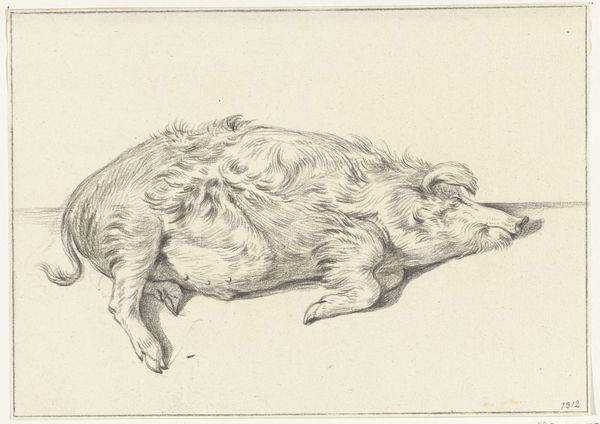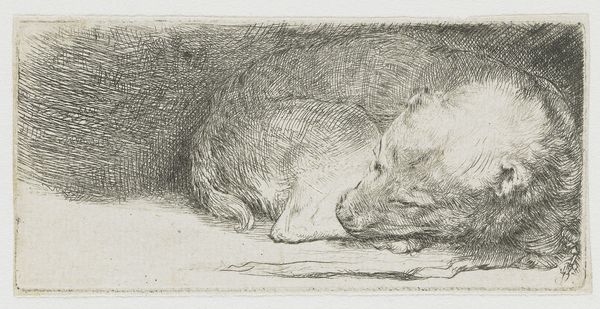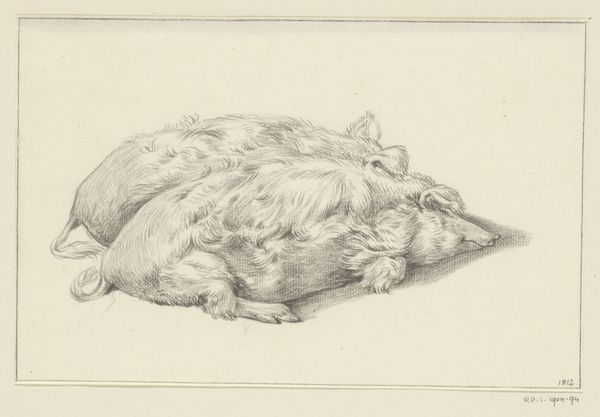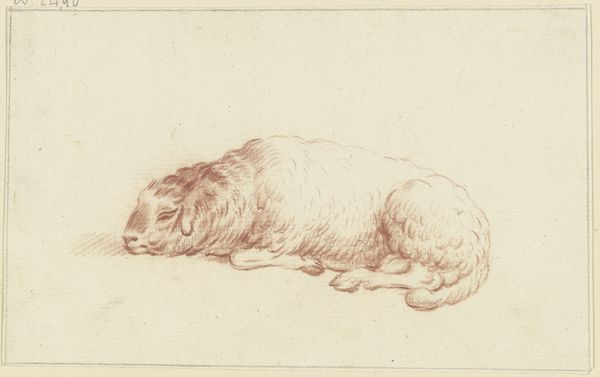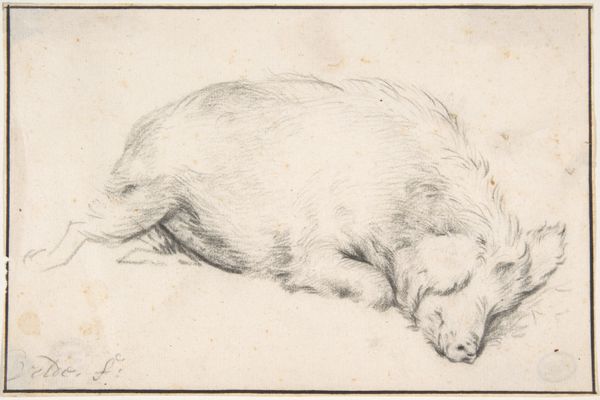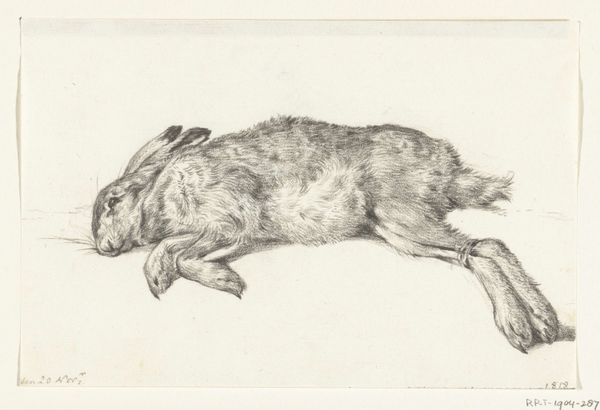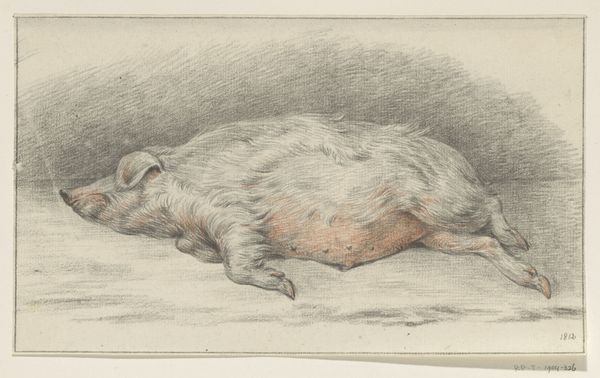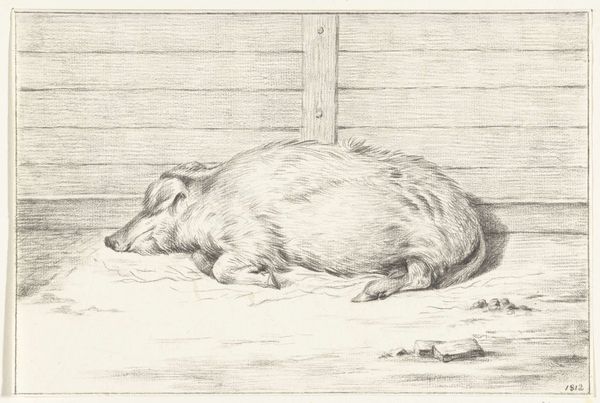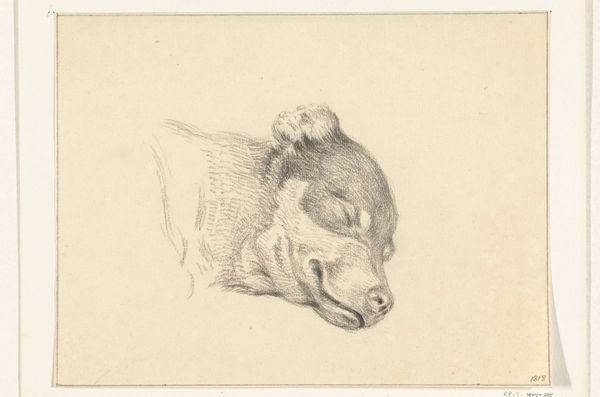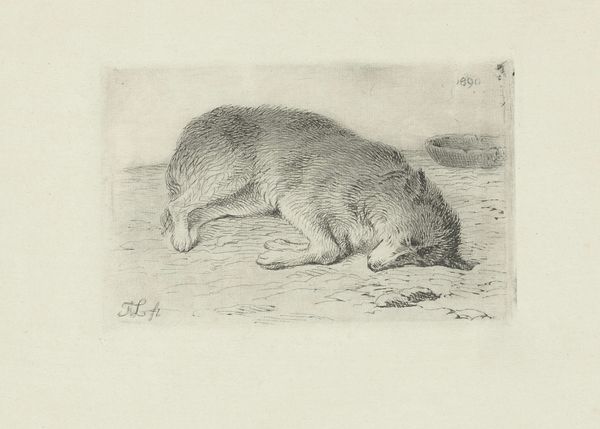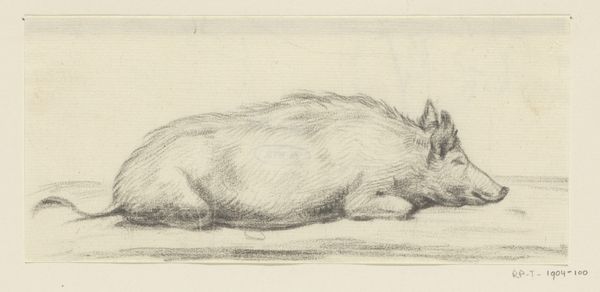
#
amateur sketch
#
light pencil work
#
pen sketch
#
pencil sketch
#
old engraving style
#
personal sketchbook
#
pen-ink sketch
#
sketchbook drawing
#
pencil work
#
initial sketch
Dimensions: height 156 mm, width 229 mm
Copyright: Rijks Museum: Open Domain
Curator: Here we have Jean Bernard's "Liggend varken, naar rechts," or "Lying Pig, facing right," created in 1812. It’s currently held here at the Rijksmuseum. Editor: Oh, wow, it's so… vulnerable looking. Just sprawled out, all soft lines and gentle shading. It makes me want to scratch it behind the ears, even though it's just a drawing. Curator: Vulnerability is certainly a reading one could embrace. Bernard was working in a period defined by enormous shifts in class and labor and burgeoning natural sciences. How might such an image play into then current social and political concerns of agrarian life or emergent zoology? Editor: That’s fascinating! I honestly hadn’t even thought about that. To me it just seems…I don’t know, really intimate? The artist clearly observed this animal closely. It feels less like a study, though the style gives a sort of personal sketchbook vibe, and more like a moment of connection captured on paper. You can almost feel the weight of the pig. Curator: I think it’s valuable that you noted the weight and material quality of the piece. If we consider its context within a rapidly changing understanding of human-animal relationships in the 19th century, a work such as this might become something else. For some viewers, perhaps the sketch can represent the relationship between the oppressor and oppressed; the powerless and the powerful; life and death, maybe? Editor: Deep stuff. I get all that on an intellectual level, I suppose, but my gut reaction is simpler. This drawing speaks to the inherent beauty and the individual dignity, maybe even humor, of all living beings—a pig in repose as an equal of anything! But I understand what you mean about connecting it to social power and agrarian struggles back then... Curator: Perhaps then it’s both a recognition of inherent value but, necessarily, within the unequal contexts the animal must subsist. Considering historical inequities helps open dialogue and reflection. Editor: Definitely gives you something to chew on, even more than this blissed-out porker has, lying there.
Comments
No comments
Be the first to comment and join the conversation on the ultimate creative platform.
